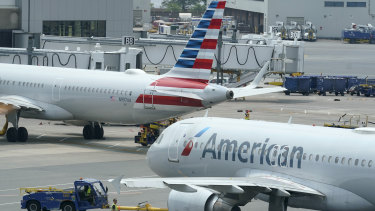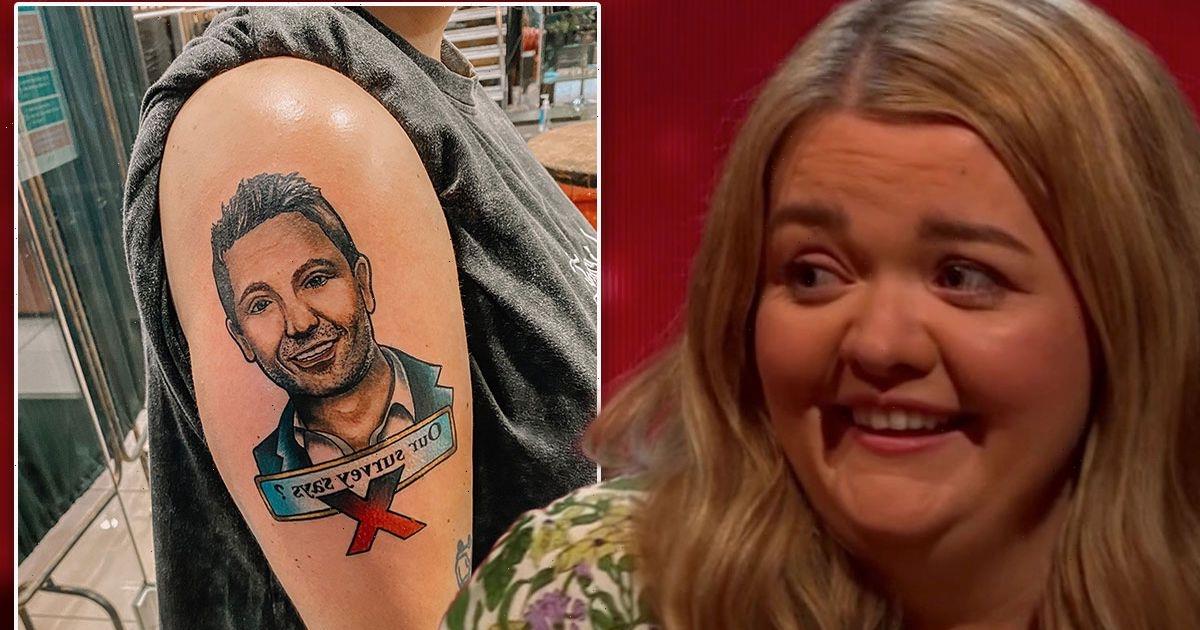For our free coronavirus pandemic coverage, learn more here.
International travellers who are fully vaccinated with mixed doses of approved coronavirus vaccines will be allowed into the United States after the Centres for Disease Control and Prevention updated its guidance Friday (Saturday AEDT).
The White House said US travel restrictions will be lifted November 8 for fully vaccinated international travellers, a policy that will in part require foreign travellers to show proof of vaccination before boarding a flight.
According to a Friday update to CDC guidance, individuals will be considered fully vaccinated if they receive vaccines fully- or emergency- approved by the Food and Drug Administration or by the World Health Organisation – including combinations of such shots.
American Airlines passenger jets prepare for departure in Boston.Credit:AP
That means international travellers will be considered fully vaccinated two weeks after they receive an FDA- or WHO-approved single-dose vaccine, such as the Johnson & Johnson shot, or “any combination of two doses of an FDA approved/authorised or WHO emergency use listed COVID-19 two-dose series,” such as the Oxford-AstraZeneca vaccine.
While the CDC said it has not recommended mixing and matching vaccines, it acknowledged that “use of such strategies (including mixing of mRNA, adenoviral, and mRNA plus adenoviral products) is increasingly common in many countries outside of the United States.”
Representative Brian Higgins, whose district along the Canadian border includes Niagara Falls and Buffalo, said the CDC’s guidance was updated after he wrote a letter to CDC Director Rochelle Walensky requesting a clarification on its policies.
“Clarity is needed on which vaccines the United States will accept when the border reopens to all fully vaccinated Canadians,” Higgins wrote on Thursday.
“Nearly four million Canadians, equivalent to ten percent of their fully vaccinated population, have received mixed doses of the available mRNA COVID-19 vaccines – this includes the AstraZeneca vaccine.”
In an interview Sunday, Higgins told The Washington Post that his office communicated with the CDC before sending the letter, and that the agency indicated that it was “working on it”.
Higgins welcomed the “long-overdue” update but criticised the rollout of the federal government’s travel rules.
“This border should have been open months ago,” he said, adding that “both sides of the border have been hurt economically and have been hurt emotionally and have been hurt in terms of quality of life.”
He said the guidance clarifying which coronavirus vaccines will be allowed is “helpful, but again these are stand-alone issues that have confused people”.
“It was inevitable that the border was going to open at some point,” Higgins said. “All of these issues should have been anticipated and discussed and finalised so both the US and Canadian governments and public health officials can speak with one, clear, concise message. That’s still not happening.”
He also criticised the coronavirus testing requirements for travellers coming into the United States.
The CDC’s website notes that fully vaccinated air travellers coming into the United States from abroad will be required to have a negative coronavirus test result before boarding a flight into the United States. Those travelling by land do not need to provide a negative test.
Anthony J. Santella, professor of health administration and policy at the University of New Haven in Connecticut, said the CDC’s guidance allowing mixed vaccine doses “is a smart thing to do if you want to open your doors again”.
“If we’re really serious about being okay with domestic and international travel, we have to be willing to accept that not every country does the same thing and has the same kind of vaccination policy,” he said.
Santella said the CDC’s guidance suggests that US officials are “choosing to accept that these vaccines largely work and that we’ll err on the side of, ‘If you’re vaccinated, regardless of what vaccine it is, you’re welcome here,’ and to let science continue to take its course.”
The updated guidance comes as a US coronavirus surge wanes, though public health experts are bracing for the possibility of a “twindemic” of COVID-19 and the flu season.
More than 59,000 people in the United States are hospitalised for treatment of COVID-19, according to data tracked by The Post, with coronavirus-related hospitalisations falling 7.5% in the past week. There were more than 100,000 new coronavirus cases reported Friday, with new daily reported cases dropping more than 13% in the past week.
Washington Post
Get a note direct from our foreign correspondents on what’s making headlines around the world. Sign up for the weekly What in the World newsletter here.
Most Viewed in World
From our partners
Source: Read Full Article



